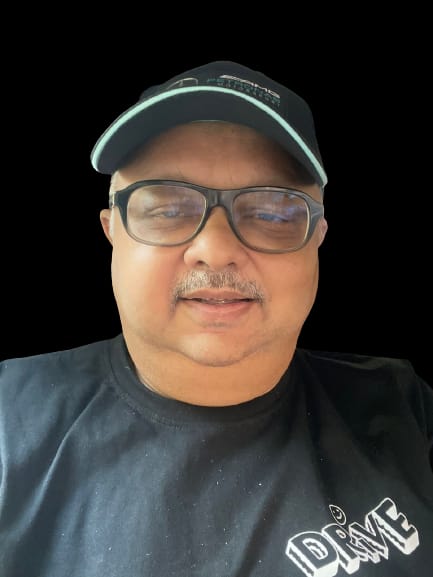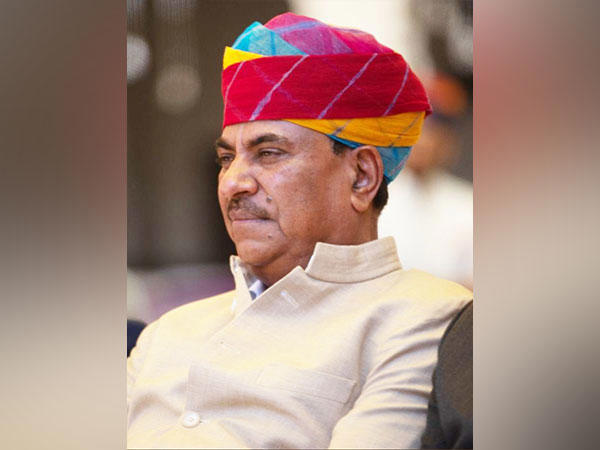The Story Takes Time

Personal story sharing, like many things, gets better with time, and I’m no exception to the rule. More specifically, I think it gets better with time when the time is used to practice. I believe this because the way I share stories today is quite different from what it eight years ago, when I started Share More Stories. I am more confident, and I am more impactful as a result.
Eight years ago, I was convinced that there was an unmet need for people to share more authentic, personally engaging content than what we were seeing on social media then. (The last eight years have only deepened my conviction.) But I didn’t know how to do it. I didn’t know what to build. I didn’t know how to facilitate it. So I started with how I liked to write, which was often a collaborative process. I liked to write about personal experiences. And I really liked the idea of exploring the stories and experiences that scared me a little bit; the ones that required me to be vulnerable. (I have a love/hate relationship with vulnerability, but that’s another story for another day.) From our earliest days, there was so much trial and error, and I would take EVERY opportunity I had to test and learn, from creating a cowriting workshop for my son’s high school English class, to giving free talks about storytelling so I could test my ideas and pilot my approaches, to a failed crowdfunding attempt that taught me a lot about what people did and didn’t need, when it came to personal storytelling. And I started building a team – initially all advisors – who could help this go from “me” to “we.”
Finally, I got my first big break. A friend and advocate who had known me through my corporate career and continued to support me in my entrepreneurial journey, recommended me to the CEO of a regional leadership organization and told her that I would be an excellent speaker/facilitator for their annual retreat. So I met with this CEO over coffee, told her about the approach we’d developed, and she invited me to facilitate my storytelling workshop with the group. When it came time to lead the workshop, I was so excited. So excited in fact, I got nervous. Really nervous. Each year this retreat takes place on or around September 11th, and I believe that whenever I’m facilitating or coaching something or someone new, I should lead by example. So I started in with a story about September 11. And I was immediately overwhelmed by emotion as I recalled the events of that day and the pain that NYC (my hometown) and our entire country endured. My voice started to crack as I got a major case of the sweats. (There’s the fear.) It was not pretty. I immediately lost all confidence, and when you know you’re not doing a good job in real time, you start talking to yourself inside your head at the same time you’re still speaking or presenting. I was telling myself, “Well, this is the first and the last time I’ll ever facilitate this workshop.” I also told myself, “You’re an idiot. A fraud. You have no business doing this. Who do you think you are?” Yet, as I reminded my participants, “everything you want is on the other side of fear” (Jack Canfield). I guess, I had to eat my own cooking, right?
I pushed through the rest of the session, constantly in fear that I was failing in front of everyone. There was one participant who was seated at a front table, and I swear he was seeing right through me. In my mind, he viewed me with scorn and disbelief, and I heaped upon him all my fear and self-doubt. It got to the point where I couldn’t look in his direction. Eventually, the session came to an end, and I got out of there. Fast forward a few months later: to my surprise, I was invited to continue working with the group on their stories. So, despite fear whispering in my ear (“Don’t do it; you failed once, why fail twice?”), I said, “Sure! I’d love to work with the group again.” I facilitated another session, and there again was that one participant. He still had a look on his face that I interpreted as, “Here we go again. This guy. He doesn’t know what he’s doing.” But I ignored that and did what I had to do. At the end, I asked for feedback, of both that session and the process overall. This one person, the one I was most afraid of, he raised his hand to speak, and what he had to say floored me.
He said that in the first session – you know, the one where I thought he could see right through me – I had unlocked something in him he didn’t know was there. That he had thought about his childhood and his father in such a deep way, that on his way home from the retreat, he drove 30 miles past his exit because he was so deep in reflection. He said, “Thank you for helping me get that out.”
It happened! Reflection. Connection. Insights. All at once. All that time, I was worried about failing. And maybe I was failing. But I was also making a difference. Sometimes, the stories we share are there to help us, individually. Sometimes they resonate with a lot of people. And sometimes, it’s about connecting with just one more person. I think maybe that’s what was happening in that experience. There is a lesson, an insight, a learning, in every single story we have, if we are willing to wait for it, and to see it when it reveals itself.
I’ve facilitated the personal story sharing workshop every year for the past eight years with this same regional leadership group, because they keep asking me back, and I keep saying “Yes!” During that time, I’ve probably guided 500+ leaders to explore and share their personal stories, just through this one annual retreat. That’s at least 500 possibilities to connect and learn. At the beginning of that journey, I didn’t think I had reached even one. Now I know I’ve personally reached hundreds, and I believe I’ve helped them make positive impacts on thousands more through their leadership in their organizations and in the community. And as a company and a team, together we’ve impacted hundreds of thousands of people, with our unique approach to learning and connecting through shared stories, fostering deep insight and engagement, and improving human experiences. When I facilitate this and other sessions like it, I often bring my own stories into the conversation, because again, if I’m asking people to be vulnerable with me, I need to show them how to do it, and that it’s safe to do it. In my most recent workshop with this same leadership group, the storytelling prompt for the group was to think about a time when they felt they were their most authentic self. I shared the story about my sister’s death. I could tell it was unexpected, a lot for the group to handle, and I wondered if I had gone too far in my quest to demonstrate vulnerability through authenticity, courage, and curiosity. And once again, I was proven wrong. A participant told me that the courage of sharing my story paved the way for them to explore and share theirs. They said to me, “I was all set to answer this prompt at a pretty surface level. Then I heard your story, and I was like, ‘Alright then. I guess we’re going there.’ So my story is going a lot deeper now.”
My confidence in sharing stories has grown a lot over the years because I’ve stuck with it. And when I feel a little fear about being vulnerable, I have so much more experience to draw upon, so many more reminders that I’m doing the right thing, so many more stories like the ones above that tell me, “Go forward, James. What you are here to do, is on the other side of fear.” I wouldn’t know any of this if I had given up after that first year, after that first workshop, after that crowdfunding campaign, after all the failure.
It’s been said that the process of building something transformative and impactful is a journey of both long-term patience and short-term impatience. I can attest to that, because that’s been the story with Share More Stories, too.
Our tools and methodologies for helping people share their stories have changed. Back in 2016, we used to do a 4.5-hour storytelling workshop in person, that was heavy on presentation content because I felt I needed to prove we knew what we were doing. I thought more was better. Then Jen Pike and Andy Sitison came along in 2018 and helped evolve that into a shorter 2.5 hour-session that we introduced as SEEQ in early 2019, focused less on us, and more on our participants. We also built new websites in 2019 that helped us understand and improve user and participant experiences when it came to writing and sharing stories. And when the pandemic hit, we moved our SEEQ sessions online, which created new opportunities for more people to participate and connect. And in the next couple of weeks, we’ll introduce a new web app that enables people to participate in SEEQ wherever they are, and whenever they want to – no longer limited by a scheduled, facilitated session. The empathy-based, emotionally-driven way we guide people to create and share their stories finally realizes an eight-year-old dream of helping people get their stories out into the world with authenticity, courage, and curiosity.
The level of sophistication and expertise we bring to our story analysis and strategic insights have grown over time. In late 2015, we were using an off-the-shelf NLP tool to analyze emotions and sentiment – in an extremely manual process. Then in 2016, we adopted IBM’s AI tools, Natural Language Understanding and Personality Insights, giving us deeper understanding of not only what people were writing, but what it might tell us about them – but it was still an extremely time-consuming and inefficient process. We were accepted into IBM’s Global Entrepreneur Program which provided access to even more tools. When Andy came on board in 2018 as our CTO, he automated all of that – AND brought advanced analytics and data science to the work, helping us identify new patterns and relationships; Jen brought an increased level of analysis and insights to client work; and these evolutions significantly enhanced our value. When IBM decided to stop supporting Personality Insights, Andy built our own NLP analytics technology, enabling us to push even further into what we could see and understand from the stories people shared with us. Our team is now on the cusp of integrating that tech into the same web app that we’re building for participants, realizing yet another vision of bringing clients and participants together to learn more collaboratively about the biggest opportunities to improve customer and employee experiences.
Trust me, we still have A LOT to figure out, and as long as we’re pushing into the less familiar, we always will. Our team has changed over the years, we’ve forged deep partnerships, and we continue to discover how we can create more value for people – inside companies, in the marketplace and in communities. It’s an exciting time to be doing this work. A time when I believe our companies, our communities, our society, really the whole world, need more authenticity, courage, and curiosity. When we need more collective wisdom, vs. fragmented narratives. When we need more purpose-driven connection enabled by deeper human understanding. When, frankly, we need more stories.
Our story – my story – is different because we’ve persisted. That’s why we’re here. That’s why I’m here.
10/28 UPDATE: We launched our new SEEQ App!
Photo Credit: Christina Morillo on Pexels







Update on the launch of the SEEQ App: https://sharemorestories.com/share-more-stories-expands-its-seeq-platform-with-new-seeq-app/